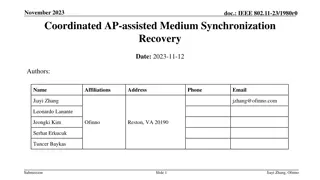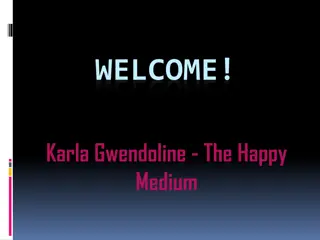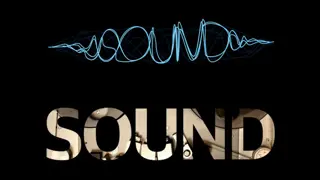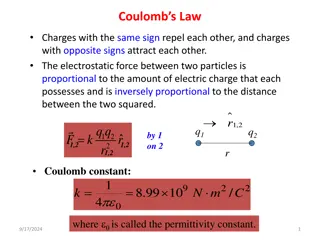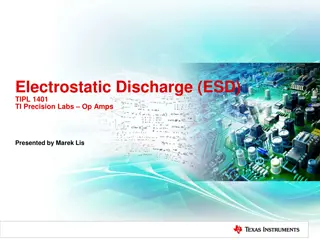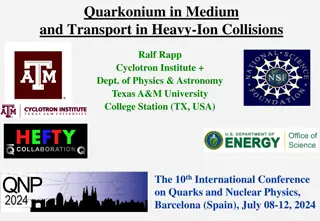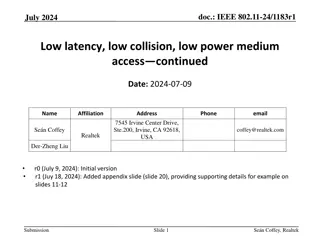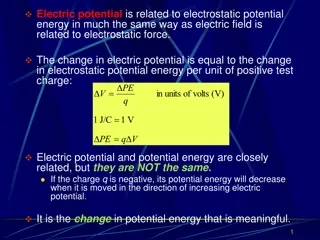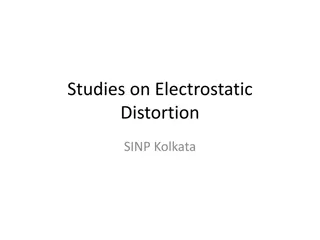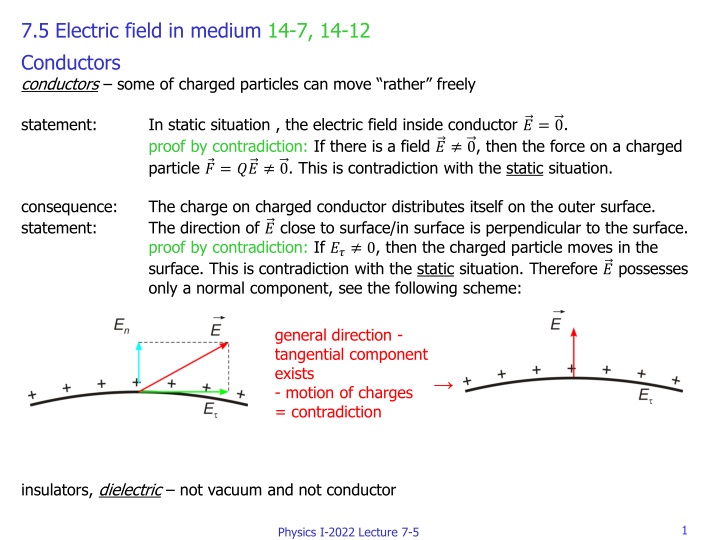
Electric Field in Conductors and Dielectrics
Learn about the behavior of electric fields inside conductors and dielectrics in static situations, including the distribution of charge on a charged conductor's outer surface and the polarization of nonpolar and polar dielectrics. Explore the concept of relative permittivity and the superposition of external and polarization fields.
Download Presentation

Please find below an Image/Link to download the presentation.
The content on the website is provided AS IS for your information and personal use only. It may not be sold, licensed, or shared on other websites without obtaining consent from the author. If you encounter any issues during the download, it is possible that the publisher has removed the file from their server.
You are allowed to download the files provided on this website for personal or commercial use, subject to the condition that they are used lawfully. All files are the property of their respective owners.
The content on the website is provided AS IS for your information and personal use only. It may not be sold, licensed, or shared on other websites without obtaining consent from the author.
E N D
Presentation Transcript
7.5 Electric field in medium 14-7, 14-12 Conductors conductors some of charged particles can move rather freely statement: In static situation , the electric field inside conductor ? = 0. proof by contradiction: If there is a field ? 0, then the force on a charged particle ? =?? 0. This is contradiction with the static situation. consequence: statement: The charge on charged conductor distributes itself on the outer surface. The direction of ? close to surface/in surface is perpendicular to the surface. proof by contradiction: If ?? 0, then the charged particle moves in the surface. This is contradiction with the static situation. Therefore ? possesses only a normal component, see the following scheme: general direction - tangential component exists - motion of charges = contradiction insulators, dielectric not vacuum and not conductor 1 Physics I-2022 Lecture 7-5
Dielectrics dielectric nonpolar effective centers of + and coincide polar effective centers of + and do not coincide - p(molecule) 0 polar molecules: p~10-30 Cm unit used in chemistry (debye): 1D=3,336. 10-30 Cm - + - + p(molecule) = 0 called nonpolar molecules when E 0 Vm-1, p(molecule) 0 + - without el. field any volume of dielectric is nonpolar (dipoles of molecules of polar dielectric random because of thermal agitations, nonpolar molecules possess no dipole moments) in external filed - polarization in nonpolar dielectric a slight net displacement of the effective centers of charge, the dipole is induced, molecules are polarized in polar dielectric - ? aligns parallel to field, see Lecture 7, video 7-4 (not perfectly, against it - thermal agitations) general description of the both cases the same: Physics I-2022 Lecture 7-5 2
polarization of dielectrics - a slab of dielectric (orange boundary) Inside dielectric the total charge is zero external electric field caused by two parallel charged plates Dielectrics without external electric field bound charges or polarization charges - induced surface charges bound in dielectrics, cannot move freely free charges in conductor the net field in dielectric ? superposition of the external field ?0 and the field ?? of polarization charge: ? = ?0+ ?? r relative permittivity (without unit) how many times the external field is changed by dielectrics r (vacuum)= 1 ? = ?0 ??=?0 ?? permittivity of medium ? = ???0 relations in vacuum relations in dielectrics: 0 Examples: 1 4? r?0 ?21 ?21 potential of a point charge at distance ? in dielectrics Coulomb s law in dielectrics ?1?2 2 ?21 1 ? ? ?21= ? ? = 4? r?0
End of video 7-5 Physics I-2022 Lecture 7-5 4







